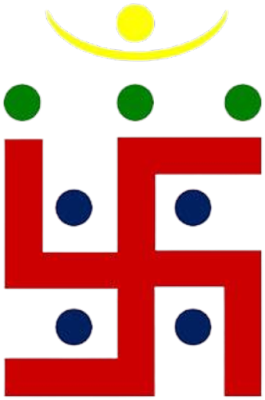JAINISM

JAINISM The Swastika is a sacred symbol in Jainism. The four sides of Swastika symbolize the four forms of existence of the worldly (non-liberated) souls. The four forms are; heavenly beings, human, Tiryanch (which includes animals, birds and plants) and hellish beings. It reminds us that worldly souls undergo a continuous cycle of birth, suffering, and death in these four forms. Hence one should follow the true religion and be liberated from suffering. The three dots represent the Jain path of liberation the - Jain trinity: Right Faith - ‘Samyak Darshan’, Right Knowledge – ‘Samyak Jnäna’, and Right Conduct – ‘Samyak Chäritra’, which together lead to liberation. The crescent of the moon represents the region known as ‘Moksha’. This region is beyond the three worlds and it is the permanent place where the liberated souls reside .